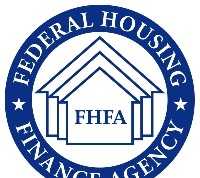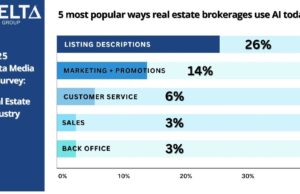By John Walsh, President, Total Mortgage Services, LLC
December 28, 2011 – (RealEstateRama) — For the past 3 ½ years it is very accurate to say that the mortgage industry has undergone a battle for its very survival. One of the deepest recessions in our nation’s history, the sharpest decline in single-family housing values since the Great Depressions, and the highest unemployment rates since the 1970s have all combined to make the past few years the most difficult ever faced in our industry. The survivors of this difficult time must focus on being part of the solution and building a stronger mortgage industry.
Over the next few months you will likely read numerous prognostications from economists, politicians and Wall Street analysts of what will transpire in the mortgage industry in 2012. What I hope you will find different about my thinking below is that it comes from someone who is on the front lines working with borrowers, originators, processors, underwriters, account executives and investors every day.
The following are five key trends likely to impact the mortgage industry and housing market in 2012:
- Mortgage rates will remain attractive through at least the first half of the year
- Home values will slowly stabilize
- Innovative products will begin to reappear
- The industry will grapple with regulatory uncertainty
- New industry leaders will emerge
Mortgage rates will remain attractive through at least the first half of the year
As we approach the end of the year, two competing forces are impacting mortgage rates—a slowly strengthening US economy and a growing sovereign debt and banking crisis in Europe. But for the situation in Europe, mortgage rates would have likely already moved higher, perhaps to a rate of 4 ½ % on the benchmark 30 year fixed rate loan. However with bond yields increasing throughout Europe (not just in initial trouble spots Greece and Italy), US mortgage-backed securities remain a safe-haven for investors.
This “push-me, pull-me” interest rate environment may or may not last. My view is that both competing forces will continue into 2012, but that the situation in Europe could stabilize, thereby clearing the way for rates to rise modestly, along with employment, consumer spending and inflation. If rates rise to near 5% by the end of 2012, as the Mortgage Bankers’ Association forecasts, we will see a major shift in loan mix in favor of purchase loans.
The MBA also says: “A faster economic recovery led by the housing market would mean faster home price growth and more sales volume, increasing purchase originations somewhat, but would cut off refinance volume sooner than in our forecast.” Barring a major shock from Europe, I expect a slow recovery based on recent employment, retail sales, industrial production and housing starts data.
Home values will slowly stabilize
What are the three rules of real estate? Location………I know—nobody wants to hear that again. But the truth of the matter, as it relates to property value stabilization, is that it will occur at different rates depending on geographically-specific criteria. Areas of the US that see the strongest growth and have the smallest foreclosure/unsold inventories will see the quickest progress. Signs of stabilization are already appearing in some areas of the US. Zillow Chief Economist Dr. Stan Humphries says: “While we still have a ways to go in terms of home value depreciation, the pace at which home values are falling has declined considerably during the course of this year. This slower pace signals that stabilization is on the horizon.”
As the job picture improves the number of homes falling into foreclosure will decline. More significantly, new households who have not felt comfortable purchasing a home will begin to gain confidence in their long term prospects and begin to take advantage of the very affordable housing opportunities available. Single-family home prices will likely be flat or see a marginal increase in 2012.
Innovative products will reappear
Congress is set to raise FHA lending limits back to $729,750 in designated high cost areas across the country. Yet, given the opportunity to raise the limits for Fannie and Freddie loans, they chose to leave the limit at the lower level of $625,500. This may open the market to new jumbo loan products from lenders, and we are already experiencing progress in this area. Additionally, there are signs that some lenders are developing non-agency products which will respond to unmet market demands and provide new investment opportunities for investors seeking higher returns. Any new products developed will be carefully designed and underwritten, but will help open responsible homeownership to more people.
The industry will grapple with regulatory uncertainty
The coming 2012 elections could be a tumultuous time for the mortgage industry. Not surprisingly, the mortgage and banking industries are likely to be the subject of much critique and demagoguery during the campaign. With Fannie and Freddie potentially seeking billions more in support from taxpayers, and consumer sentiment so negative toward banks and Wall Street, expect regulatory agencies to come down hard on the financial services industry as part of a populist effort to attract votes. Throughout the year it will seem as though our industry is in a constant struggle to demonstrate our value to the country.
We will have to participate in the debate over the role of government in mortgage finance. We will have to engage in the effort to adopt new regulations that are part of the Dodd-Frank legislation. According to Tom Donatacci, EVP of Clayton Holdings, “Among the major unanswered questions regarding Dodd-Frank: What’s a qualified mortgage? How much ‘skin in the game’ will be required of the issuer and seller? How will the conflicts-of-interest provisions impact securitization and various parties’ ability to buy and sell securities? What is the future role of the rating agencies?” New regulations are certainly coming, but their scope and impact are very much up in the air.
New industry leaders will emerge
With the challenges of the last few years forcing hundreds of thousands of 2007-era employees, thousands of small businesses and dozens of large firms out of the mortgage industry, it is somewhat surprising that some brave souls would invest their time and resources to develop, grow and improve the industry in 2012.
But that is exactly what I see when I survey they the mortgage landscape. I see: 1) Entrepreneurs and business professionals battling to build a sustainable industry; 2) New and better technology that makes our tasks easier and the loans originated of higher quality; 3) New originators committed to consumer-engagement and education; and 4) Investors eager to bring safe, reliable returns to their clients. The “new” mortgage industry is emerging with leaders who are focused on efficiency, accountability, and sound ethical behavior. That sounds like a great industry to be part of!
2012 will not present a return to the industry of the past—but it will represent a real foundation for a successful future. I for one cannot wait for 2012. Let the battles begin!
John Walsh is the President of Total Mortgage Services, an expanding mortgage banker. Mr. Walsh founded Total Mortgage Services in 1997 with a customer-centric approach and a mission of responsible lending. John Walsh can be reach at "> or for more information on Total Mortgage Service please visit http://www.totalmortgage.com.


















